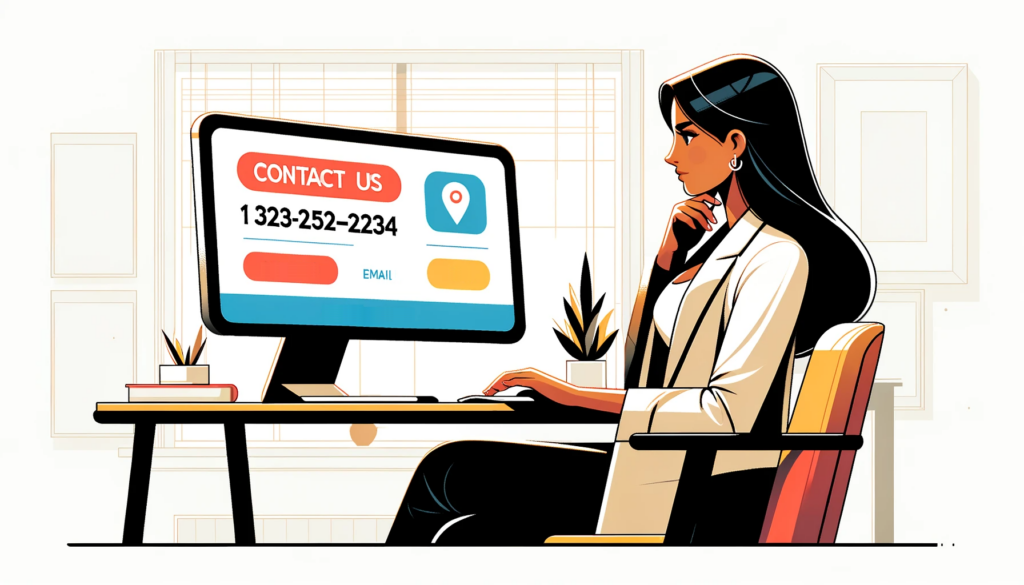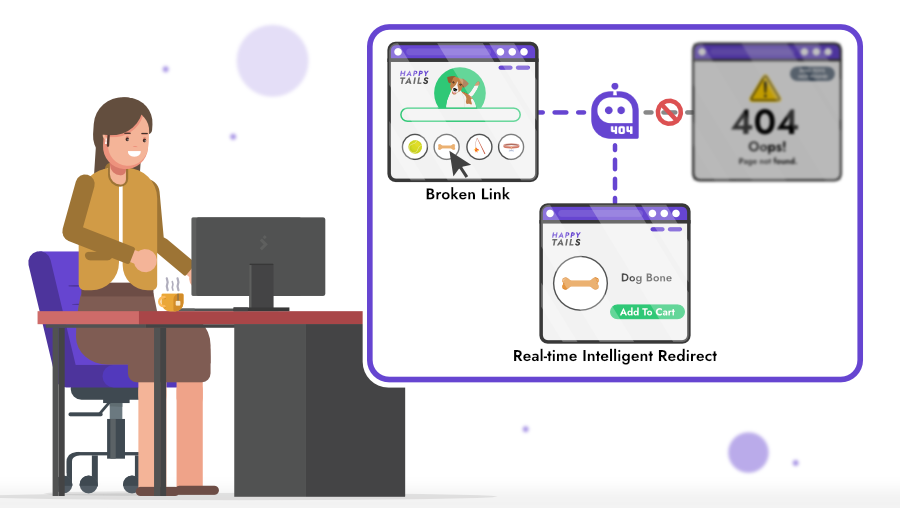Imagine your Shopify store not just as a digital storefront but as a vibrant, dynamic destination that captivates visitors the moment they land on your page. In the Ecommerce world, standing out requires more than just eye-catching designs or compelling product listings. It’s about weaving an exceptional user experience (UX) with smart search engine optimization (SEO) into the very fabric of your site. Shopify, renowned for its versatility, offers a playground for businesses to excel online. The secret to Shopify store success? Mastering the art of optimizing your Shopify page templates for both UX and SEO. This guide is your cornerstone, a comprehensive exploration into the world of Shopify page optimization, touching upon various aspects, each with its distinct significance.
In This Article
The Crucial Role of User Experience and SEO in Shopify Store Success
The synergy of user experience (UX) and search engine optimization (SEO) forms the backbone of digital triumph. This alliance is more than a mere coexistence; it’s a dynamic interplay where each element amplifies the other, creating a harmonious pathway to success.
The Power of Exceptional User Experience
User experience in eCommerce is akin to the ambiance and customer service in a physical store. It’s the feeling a visitor gets when they navigate your site, the ease with which they find what they’re looking for, and the satisfaction from a seamless shopping experience. Exceptional UX captivates visitors, turning the casual browser into an engaged shopper. It’s about creating an intuitive, enjoyable journey through your website, where every click brings them closer to a purchase.
But it’s not just about the immediate sale. Stellar user experience lays the foundation for lasting customer loyalty. When visitors enjoy their time on your site, they’re more likely to return, recommend you to friends, and become advocates for your brand. UX extends beyond the screen; it encompasses every touchpoint of your digital presence, from website design to checkout process, customer service, and even the follow-up communication.
The Vitality of Effective SEO
While UX keeps visitors happy once they’re on your site, SEO is the beacon that guides them there in the first place. In the vast ocean of online content, effective SEO is your lighthouse, making your site visible and attractive to potential visitors through search engines. It’s about understanding and leveraging the nuances of how people search for products or information online and tailoring your content to meet these needs.
Effective SEO involves a cocktail of keyword optimization, meta tags, backlinks, and quality content, ensuring your site ranks high on search engine results pages (SERPs). High visibility in search results increases the likelihood of organic traffic – visitors who come to your site through non-paid search results. This traffic is invaluable, as it comprises users actively seeking what you offer.
The Symbiosis of UX and SEO
The interplay between UX and SEO is a dance of visibility and engagement. On the one hand, there’s no point in a beautifully designed website if no one can find it. This is where SEO comes in, ensuring your site is discoverable. On the other hand, driving a lot of traffic to your site means little if visitors leave out of frustration or confusion. This is where UX shines, keeping them engaged and interested.
Imagine SEO as the map that leads explorers to a treasure, and UX as the experience of unearthing it. A map leading to a lackluster treasure disappoints, just as a magnificent treasure, unreachable due to a flawed map, remains undiscovered. The magic happens when the map is clear, and the treasure is dazzling – that’s the sweet spot of eCommerce success.
In essence, the importance of UX and SEO in eCommerce cannot be overstated. They are the twin engines powering your online presence, driving both discovery and delight. A harmonious balance between the two is not just desirable; it’s essential in the quest to transform clicks into customers and customers into brand ambassadors.
The Gateway to Customization: Shopify Page Templates Explained
Shopify, renowned for its versatility and user-friendly interface, offers a treasure trove of customizable page templates. These templates are much more than mere building blocks of your website; they are the canvas upon which your brand’s digital persona is painted. From the vibrant, inviting homepage to the meticulously detailed product pages, each template serves as a cornerstone in the architecture of your online store.

The Essence of Shopify Page Templates
At the heart of Shopify’s appeal is the flexibility and diversity of Shopify page templates. Each template is a carefully crafted framework designed to bring your unique vision to life. They are the skeleton that supports the body of your content, the structure upon which your website’s personality is built. Whether you’re aiming for a sleek, minimalist design or a bold, colorful layout, Shopify’s templates offer the versatility to realize your aesthetic and functional aspirations.
Crafting the User Experience
Optimizing Shopify templates goes beyond mere visual appeal; it’s about engineering an immersive user experience. These templates are your tools for creating a journey that captivates and retains customers. The way your homepage welcomes visitors, how your product pages display items, or how easily users can navigate through your collections – all these elements contribute to a cohesive and engaging user experience. Optimized templates guide users effortlessly from initial curiosity to final purchase, ensuring every touchpoint on your site is intuitive and enjoyable.
Enhancing Visibility with SEO-Optimized Shopify Page Templates
In the digital marketplace, visibility is currency, and Shopify page templates are your investment. Optimizing these templates for search engines means each page becomes a beacon, drawing in organic traffic. It involves fine-tuning the technical aspects like page loading speeds, mobile responsiveness, and metadata, as well as the content elements like keyword integration and image optimization. This dual focus ensures that your site not only attracts visitors via search engines but also engages and delights them once they arrive.
The Role of Page Templates in Brand Consistency
Another crucial aspect of Shopify templates is their role in maintaining brand consistency. Consistency in design, messaging, and user experience fosters brand recognition and trust. Shopify templates allow you to weave your brand elements – colors, fonts, style, tone – throughout your site, creating a familiar and reassuring presence that resonates with your audience.
The Multifaceted Benefits of Shopify Page Template Optimization
Embarking on the journey of Shopify page template optimization is like unlocking a trove of potential for your eCommerce store. This process is not just a tweak here or a touch-up there; it’s a comprehensive enhancement that breathes new life into every aspect of your site. Let’s dive into the array of benefits that this optimization offers:

1. Enhanced User Engagement: Crafting a Captivating Online Experience
Imagine your Shopify store as a digital storytelling platform, where every page weaves part of your brand’s narrative. Optimizing your templates elevates user engagement to new heights. This is where intuitive navigation, aesthetically pleasing design, and content relevance coalesce to create an enchanting user experience. Each well-crafted page is a new chapter that holds the visitor’s attention, encouraging them to explore further, engage deeper, and connect with your brand on a more meaningful level.
2. Boosted Conversion Rates: Smoothing the Path to Purchase
The essence of eCommerce success lies in not just attracting visitors, but converting them into customers. Optimized Shopify templates act as skilled guides, leading users gracefully along the buyer’s journey. From the moment a potential customer lands on your page to the final checkout, each step is streamlined for ease and efficiency. Clear calls to action, strategically placed product recommendations, and a frictionless checkout process work together to gently nudge visitors towards making a purchase, thereby elevating your conversion rates.
3. Improved Search Engine Rankings: Securing a Spot on the Digital Stage
Visibility is key. SEO-friendly Shopify templates are like spotlights that shine on your store in the crowded marketplace of search engine results. By optimizing for SEO, your pages are better equipped to climb the ranks of search engine results, making your site more visible and accessible to a broader audience. This optimization includes refining meta tags, improving site speed, ensuring mobile responsiveness, and integrating relevant keywords, all of which contribute to a stronger online presence and a surge in organic traffic.
4. Lower Bounce Rates: Keeping Visitors Hooked
A visitor’s decision to stay or leave your site often hinges on their initial experience. Optimized pages capture and retain user interest, significantly reducing bounce rates. This is achieved by providing clear, relevant information, fast loading times, and an overall appealing and user-friendly layout. When visitors find a site that resonates with their needs and expectations, they are more likely to linger, explore, and ultimately, engage with your brand. Lower bounce rates not only indicate a successful user experience but also contribute positively to your site’s SEO performance.
Optimizing your Shopify page templates is an investment that pays dividends in user engagement, conversion rates, search engine visibility, and customer retention. Each element of optimization is a step towards building a more robust, effective, and thriving online store. As we delve deeper into the specifics of optimizing various page types, keep in mind these overarching benefits that a well-optimized Shopify store promises to deliver.
Overview of Key Shopify Page Templates
Delve deeper into each facet of Shopify page template optimization through these focused sub-topics:
Contact Us Page
The Contact Us page on your Shopify store plays a crucial role in enhancing both user experience and SEO. A clean and intuitive design ensures visitors can easily find and use contact options like forms, emails, and phone numbers, creating a seamless and efficient interaction. Personalizing the page with warm greetings and team photos can make users feel more connected to your brand.

To boost SEO, naturally incorporate relevant keywords into the content, headers, and alt texts of images. Writing compelling meta descriptions and title tags that include your brand name and primary keywords can significantly improve search engine visibility. Additionally, ensure the page is optimized for quick loading and include local contact details to enhance local search rankings (if relevant).
Thank You Page
The Thank You page on your Shopify store is a vital tool for enhancing customer experience. After a purchase, it should express genuine gratitude and provide clear next steps, making the interaction more personal and memorable. Adding personalized messages or short videos can further strengthen the connection with your brand. Incorporating links to related products or special offers can turn the Thank You page into a springboard for future sales, driving customer retention and engagement.
While you typically wouldn’t optimize this particular page for SEO, you should consider encouraging social sharing with easy-to-use buttons.
404 Page
The 404 page on your Shopify store is often seen as a dead end, but with the right optimization, it can become a strategic asset. When visitors encounter a 404 error, it’s typically due to mistyped URLs or outdated links. Instead of letting this moment frustrate your users, transform it into an opportunity for engagement and redirection. A well-designed 404 page can recapture their attention, guiding them back to relevant content on your site.
Using NotFoundBot, you can craft a user-friendly 404 experience that reflects your brand’s personality. Integrate intelligent navigation options to offer clear paths to popular products or categories. NotFoundBot’s advanced AI can provide personalized recommendations based on visitors’ browsing history, enhancing their experience and increasing the likelihood of conversion. Empathetic messaging is also crucial; acknowledging the inconvenience and offering helpful assistance can turn a moment of frustration into one of positive engagement. By leveraging these strategies, your 404 page can become a valuable tool for maintaining user interest and driving sales.

About Us Page
The About Us page on your Shopify store is a powerful narrative tool, weaving together the story, ethos, and aspirations of your brand. This page goes beyond being a mere informational backdrop; it serves the essence of your brand. It provides an opportunity to build a strong connection with your visitors, transforming casual browsers into loyal customers.
To craft a compelling About Us page, start by telling your brand’s authentic story. Begin with the inception of your brand, detailing the inspiration behind it, and narrate the evolution of your ideas. Share the challenges you’ve faced and how you’ve overcome them, highlighting key milestones and achievements that showcase your brand’s journey. Personal stories and emotional connections foster a deeper bond with your audience, making your brand relatable and trustworthy.
Visual storytelling plays a crucial role in engaging visitors. Use behind-the-scenes photos, engaging videos, and infographics to provide a transparent and authentic look into your brand. Highlighting your team and their contributions can humanize your brand, while interactive elements such as quizzes or dynamic timelines can enhance engagement. Transparency about your products, processes, and future goals builds trust and loyalty among your customers.
Leveraging SEO techniques on your About Us page can further enhance its impact. Naturally integrate relevant keywords into your content, and craft compelling meta tags and descriptions to improve search engine visibility. Ensure your page is mobile-responsive and includes internal links to other relevant sections of your site. Adding contact information can also boost local SEO efforts.
By integrating these elements, your Shopify About Us page template will not only tell your brand’s story more comprehensively but also foster a deeper connection with your audience, building a foundation of trust and loyalty. Transform your About Us page into a cornerstone of your digital identity, enhancing both user experience and SEO.
Password Page
The Shopify Password Page is more than just a security feature; it’s the first touchpoint between your brand and potential customers. This page can set the tone for what lies ahead by reflecting your brand’s voice and personality. Use engaging visuals and personalized welcome messages to make a strong first impression. Incorporate elements that build anticipation and curiosity, such as sneak peeks of upcoming products or a countdown timer to your store launch. Ensure the layout is intuitive and mobile-responsive, providing a seamless user experience across all devices.
Beyond aesthetics, the Password Page is a strategic tool for various scenarios like pre-launch events, exclusive access for VIP customers, or during site maintenance. By balancing accessibility with exclusivity, you create a sense of mystery and anticipation without alienating potential customers. Interactive elements, such as sign-up forms for updates and social media links, can further engage visitors and keep them connected with your brand.
In essence, your Shopify Password Page template should be a dynamic and engaging gateway that not only regulates access but also enhances the user experience, turning a simple entry point into a strategic asset for your brand.
Search Page
The Shopify Search Page is a vital element in enhancing user experience (UX) and driving business growth. It serves as the hub where customers actively seek products, making it crucial to optimize for efficiency and engagement. A well-optimized search page can significantly influence customer retention and satisfaction, setting the stage for repeat visits and referrals.

To elevate the search experience, ensure high-quality product images and detailed descriptions, providing a comprehensive understanding of each item. Personalization is key; greet users by name and tailor product recommendations based on their browsing history to create a more engaging and relevant experience. Implement display filters to simplify sorting and selection, allowing users to find exactly what they need quickly and easily. Enhanced search features, such as predictive search and visual search, can further streamline the process, helping users locate their desired products with minimal effort.
Additionally, leverage the search page to showcase discounts and offers, motivating buying behaviors. Integrate social proof, including reviews and influencer endorsements, to build trust and confidence in your products. Regularly analyze search page reports to understand user behavior and refine the search experience continually.
By focusing on these elements, you can transform your Shopify Search Page template into a powerful tool for customer engagement and conversion, ultimately boosting your store’s success.
Landing Page Template
Design landing pages that don’t just attract but convert.
Landing pages on Shopify are crucial for driving conversions and improving user experience (UX). They serve as pivotal points where prospects from paid ads, social media, and email marketing converge, making it essential to optimize these pages effectively.
Landing pages are designed to convert visitors by prompting them to take specific actions. They are instrumental in generating leads through forms and driving sales by connecting customers directly to offers.
To optimize your Shopify landing page, start with a captivating headline that uses appropriate font, color, and style to grab attention. Ensure the subheading supports and complements the main headline, maintaining clarity and relevance to keep visitors engaged. Creating content from the prospect’s perspective is key, addressing questions of reliability, problem-solving, and benefits. Focus on one compelling call-to-action (CTA) to avoid distractions and drive conversions, making sure the CTA button contrasts with the background for visibility.
A content-first approach is recommended, prioritizing content during the design process for a balanced and minimalistic look while adhering to your brand philosophy. When designing lead capture forms, keep them simple by requesting only essential information like name and email to reduce friction. Incentivized CTAs, such as “Get a free sample,” can also entice prospects more effectively.
For SEO optimization, select long-tail keywords and perform competitor analysis to attract targeted traffic. Incorporate keywords in metadata and alt tags for improved search engine visibility. Ensure that your landing pages are mobile-friendly to enhance UX and boost conversions, and optimize images and videos to reduce loading times and maintain visitor interest.
Creating Shopify landing pages is manageable from the Shopify admin dashboard, where you can add and modify sections to craft effective landing pages using templates and the editor.
Product Page Template
The Shopify product page is crucial in showcasing your offerings and driving conversions. It is essential for building brand trust and enhancing the user experience (UX). A well-crafted product page should feature high-quality images, detailed descriptions, and engaging content that captures the essence of your products.
Product titles and descriptions should be concise and relevant, including all necessary specifications. Clear, high-resolution images from multiple angles, along with demonstration videos, help customers make informed decisions. An FAQ section and customer reviews can further enhance trust and facilitate the buying process. Ensure your product pages include comprehensive details on pricing, delivery options, and return policies to avoid last-minute surprises.
For SEO, use concise URLs, optimize metadata, and include relevant keywords naturally in product descriptions. Properly sized images ensure quick loading times, enhancing both user experience and search engine rankings. Building backlinks to unique product pages can also boost visibility.
To edit your Shopify product page template, navigate to Online Store > Themes > Customize, and select the product template you wish to modify. For additional features, consider integrating apps from the Shopify App Store.
By optimizing your Shopify product page template with these strategies, you can significantly improve user engagement, boost sales, and build a loyal customer base.
Collections Page
The Shopify Collections Page is an essential part of your eCommerce store, acting as a gateway to various products. By optimizing this page, you enhance user experience (UX), improve search engine optimization (SEO), and drive conversions. Here’s how you can elevate your Collections Page to maximize its effectiveness.
A well-organized Collections Page helps users find what they are looking for quickly and easily, reducing frustration and enhancing the shopping experience. Clear categories are crucial; dividing your products into intuitive categories that make sense to your customers mirrors the way products are arranged in a physical store. Adding filters and sorting options allows customers to filter products by various attributes like size, color, price, and more, and sorting options can further streamline their shopping experience by letting them sort by popularity, price, or new arrivals. Additionally, incorporating a search bar within your collections helps users find specific items quickly, and supporting natural language processing can accommodate varied search queries.

Creating an engaging and efficient user experience on your Collections Page keeps visitors on your site longer and encourages them to make a purchase. High-quality images are essential for showcasing products, allowing customers to see details clearly, and using consistent image sizes helps maintain a clean and professional look. Detailed product descriptions that include comprehensive product information with relevant keywords not only assist in SEO but also provide customers with the information they need to make informed decisions. Integrating customer reviews and ratings on the Collections Page can influence purchasing decisions and build trust with new visitors.
Optimizing your Collections Page for SEO increases your store’s visibility on search engines, driving more organic traffic to your site. Including relevant keywords in your page title, meta descriptions, and URL is crucial, and using keyword modifiers can cover a range of search queries. Writing concise, compelling meta descriptions that include primary keywords and accurately describe the page’s content is important. Additionally, using descriptive alt text for all images can improve SEO and make your site more accessible.
A fast-loading Collections Page enhances user experience and can positively impact your SEO rankings. Ensuring all images are optimized for web use without compromising quality reduces load times and improves overall site performance. Making sure your Collections Page is fully responsive and offers a seamless experience across all devices is crucial for retaining customers, especially with the rise in mobile shopping.
Embark on this journey to transform your Shopify store into a harmonious blend of UX and SEO excellence. Each Shopify page template of your site holds the potential to captivate and convert. Enjoy and learn from each of the links above where we delve into each specific page type, empowering you to elevate your Shopify store into a user-friendly, SEO-optimized e-commerce seller.
